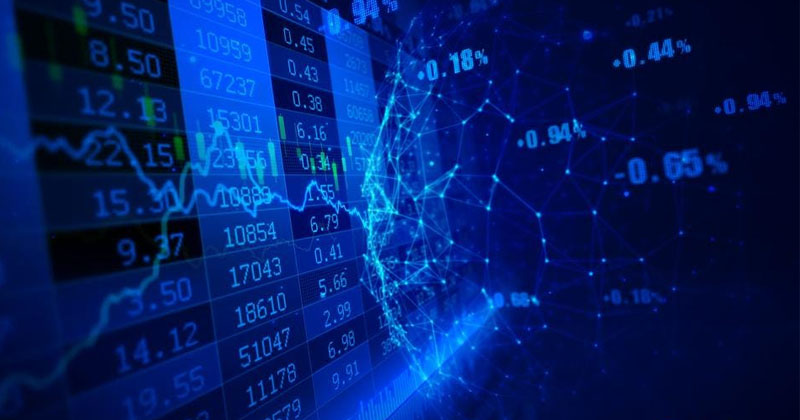
With everything going computerized and digital, the amount of data generated by us is humongous. Organizations collectively spend billions of dollars to just store and analyze this data. They make efforts to drive valuable business insights from this data using data mining.
Data Mining is the process of discovering hidden patterns in a pile of big data. Business executives use these emerging patterns to make informed business strategy decisions. Data mining is not a new concept. But with technology's progression, the way we collect, organize, store, and analyze data has evolved. Newer tools and techniques have made the life of a data scientist a lot easier.
The key to becoming an expert data scientist is mastering the data mining tools and techniques you will need to deal with the huge volume of data and produce useful outputs from it. The following are the top techniques to begin with.
Data Mining Techniques
Data mining is a process of extracting knowledgeable and actionable insights from the available data. Here are a few techniques that your data science team can use from time to time.
1. Classification
Classification is one of the simplest data mining techniques that enable you to extract knowledge from data. It is a supervised learning technique. In classification, we start with different data points that are put into one of the predefined categories depending on their features.
A good classification example would be a modern email management system like Gmail. There are different categories of emails – primary, updates, promotions, forum, and spam.
These five are predefined categories. Once a new email arrives, it is put into one of these as per its similarity with a category.
Methods of classification –
- Naïve Bayes – This technique uses the Bayes theorem of Probability and past data to make classification predictions.
- Logistic Regression – Logistic regression uses the log function to give the probability of a data point belonging to a certain category. So, in an email management system, logistic regression will give you probabilities of the email belonging to primary, updates, promotions, forums, or spam. The highest probability is taken as the prediction made by the machine learning model.
- SVM (Support Vector Machines) – SVMs is a supervised learning approach that is usually used for classification purposes. A line/plane separating two different classes of data points is drawn in SVM classification.
- Decision Trees – Decision trees are how we normally go about making different decisions in our day-to-day life. If a condition holds, we do this, otherwise, we do that. While classifying with decision trees we say – If a condition holds, this data point goes to this class otherwise it goes to that class.
- KNN – KNN or K-nearest neighbors algorithm classifies a new object by calculating its nearest neighbors in terms of similar features. If more of its neighbors belong to class A, the new data point is also added to class A. A distance formula is used to calculate this similarity.
2. Clustering
Clustering is an unsupervised learning algorithm that helps you unravel hidden patterns in data and form clusters of data. This allows for better analysis and informed business decisions.
There are several techniques of data clustering that you can use.
- Centroid-based clustering – Centroid-based clustering algorithms organize data into non-hierarchical data clusters around different centroid points. Such algorithms are sensitive to outliers and initial conditions. Still, they are efficient and widely used by big data practitioners.
- Hierarchical clustering – In this, data is organized into a hierarchy of clusters. Thus, a data point belongs to more than one cluster. It can belong to a general category while also belonging to a specific category. For example, Sam, a student of St. Mary Convent would belong to a general human cluster as well as to more specific clusters like Male, Student, School, etc.
- Distribution-based clustering – In a distributed-based clustering approach, the basic assumption is that the dataset is arranged in some distribution like Gaussian. Thus, the probability of a data point falling in a category is used by calculating its distance from the mean. As the standard deviation of a data point increases, its probability to belong to the concerned category decreases.
3. Association Analysis
In association analysis, association rules are used to find undiscovered relations between different variables in databases. This helps in taking decisions on one variable that could create a positive business outcome in the other one as well.
For example, Amazon suggests your products in the section “Customers who bought this, also bought this”. Sometimes, it starts suggesting other products that are relevant to you because of your past purchases. A parent who has bought kid food is also more likely to buy toys.
Retailers can use association rules for product placement in stores. Does a customer who buys A, is also a buyer of B? How many times does it occur that he buys both A and B together? When statistically it is favorable, A and B are placed on the shelves together in stores.
Not only in retail but association rules also prove helpful in the healthcare and governance sectors.
4. Outlier detection
Outlier detection is not about identifying patterns in big data. It is rather about identifying data points that are too far out of the usual patterns. It is essential for detecting errors and preventing any fraudulent behaviors.
Not only that, but it also enables businesses to handle logistics efficiently in midst of a newly emerging trend that starts as an outlying behavior.
Techniques of outlier detection include the following –
- Z-score – It is a statistical concept that measures - How many standard deviations a data point is from the mean of the distribution?
- Interquartile Range – Interquartile range is the difference between the 3rd quartile and the 1st quartile. It tells us - Which data points are showing outlying behavior?
- Isolation forest – This method uses specialized algorithms that are specifically targeted at anomaly detection.
5. Regression Analysis
Regression is a technique commonly used by a data science team to plan and predict scenarios. It is a supervised learning technique that uses past data to guess what’s coming next. The independent variables are input to the algorithm while the dependent variable/s is/are the output.
In a housing price prediction problem, the size of the house, number of bedrooms, etc. are the input variables while the price of the house is the output variable.
Linear regression is one of the most common approaches to performing regression analysis. Others are Polynomial regression, Lasso Regression, Bayesian Linear Regression, etc.
Now that you have seen some of the top data mining techniques, the next thing for you to know is the popular data mining tools used by professionals. In your career as a data scientist, you will be using these tools day in and day out, maybe, for the rest of your life.
Data Mining Tools
Data mining tools are software products that help you at every step of data analysis. Here’s a list of tools that will make your life easier as a data scientist.
1. KNIME Analytics
KNIME provides an open-source KNIME analytics platform that works end-to-end. The product is simple to use with regular updates making data science all the easier for career beginners. The software is enterprise-grade, meaning that it can efficiently take care of an organization’s data needs.
KNIME also offers a KNIME server for team-based collaboration and management of data science workflows. To make things even better, the KNIME team offers several extensions that big data experts love. From the in-house team to the developer community and trusted partners, everyone contributes by developing such extensions.
A data science team can gather & wrangle data, model & visualize it, deploy, and manage models while consuming insights and optimizing solutions.
2. IBM Cognos Analytics
IBM Cognos is a Business Intelligence software solution that provides efficient data prepping and business reporting. It has features like web-based data modeling, Interactive dashboards, AI assistant, Data exploration, Intelligence reports, Predictive forecasting, Decision trees, etc.
The solution is a perfect fit for organizations of all scales and is being used by many data science professionals for analytics purposes.
3. Rapid Miner
RapidMiner is a platform that supports data science teams across the complete data lifecycle. It covers data engineering, model building, model ops, AI app building, collaboration, governance, trust, and transparency across various roles. Additionally, it provides features like visual workflow designer, automated data science, code-based data science, Big Data, Real-Time Scoring, and Hybrid Cloud along with several other added features.
Enterprises like Sony, VISA, Ameritrade, BMW, Canon, Domino’s, etc. use RapidMiner across all their data operations.
4. SPSS Statistics
IBM SPSS Statistics is a statistical software solution that provides actionable insights to solve business and research problems. Its features include an intuitive user interface, advanced data visualizations, automated data preparation, efficient data conditioning, and local data storage.
Data science teams extensively use this tool due to its well-rounded capabilities. It seamlessly uses Bayesian procedures, Discriminant scores scatter, Multilayer perceptron (MLP) network, and estimated marginal means.
5. Orange
Orange is a powerful data mining tool that prioritizes rich graphics while building data analysis workflows. It supports data extraction from multiple external sources, natural language processing, and text mining. You can easily do an association analysis using this software. This is a popular tool among molecular biologists who conduct intricate gene analyses for various academic and commercial applications. Visual programming and interactive data visualizations are two of its primary strengths.
6. Weka
Weka is a collection of tools used by data scientists at various stages of data mining operations. With Weka, you can do data preparation, visualization, classification, regression, and association rules mining.
The tool is open source and is a very useful resource given the rich knowledge base that the team behind Weka has made available for public use. It has been developed on Java.
7. Sisense
Sisense is a cloud-based data analytics platform. With Sisense, you can embed data analytics into your workstreams and products, making it possible to collect data from several endpoints.
Sisense offers three product solutions for all your analytics needs – Sisense Fusion Embed, Sisense Infusion Apps, and Sisense Fusion Analytics.
The platform is easy to use and highly scalable with possible deployment and integration capabilities with AWS, Google, Microsoft, and Snowflake. From low code to full code, working with Sisense is fully customizable as per your team’s preferences and capabilities.
8. SAS
SAS is an analytics software and solutions provider that helps a business make decisions that deliver maximum value. The platform uses open-source, fully integrated technology that aptly captures the insights hidden beneath your business data.
It’s an AI-driven, cloud-native technology platform that is a perfect fit for data scientists, statisticians, and forecasters. It’s a platform of choice for brands like Honda, Nestle, and Lockheed Martin.
9. Teradata
Teradata is a flexible data warehousing as well as mining software. It allows data science teams to drive more value from their data from cloud sources like AWS, Google Cloud, or Microsoft Azure. The team claims to be the most affordable, intelligent, and fast data analysis solution provider in the market.
To sum up…
Data Mining is an undeniable reality of today’s data-driven world. As a data scientist, you will get to do it a lot throughout your career. Your expert insights will help the top management make informed decisions that will lead to business growth. Hence, learning more about data mining techniques and tools will set you on a path to success as a data science professional.
































